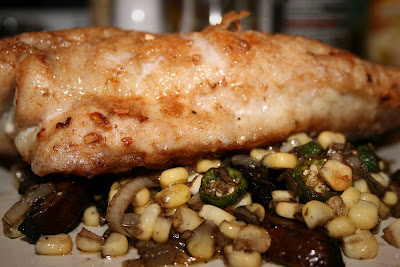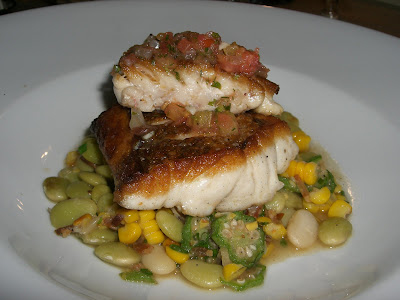It is, of course, hard to judge us, I feel: because of the lack of options available to us. Yet nothing excuses the blissful ignorance that is perpetrated by the access to what we want, when we want. Singaporeans will never be “locavores” – we will never be able to “eat locally”. We will always have to make trade-offs. But not being aware that food is grown (and tastes better) in seasons, not being aware that eating seasonally is not only better for the environment, but also for our bodies – that, I think, is inexcusable.
Yet awareness can only go so far, and environmentalism is only so noble. I mentioned how Singaporeans faced a lack of options but increasing swathes of the developed world are beginning to face this lack of options too. Not everybody has easy access to local organic small farms, or co-ops, or farmers’ markets. Industrialized food production has permeated the way we think about feeding ourselves, and it has become harder and harder, in more parts of the world, to extricate ourselves from this increasingly global system. And with the world’s population growing at historically unprecedented rates, placing a tremendous strain on the earth’s resources – who is to say that the method that can feed the most people, for the cheapest price, is not the optimal solution?
A dilemma indeed, on all fronts – moral, environmental, political, social, economic but also gastronomic. Increasingly I find that every meal I eat is an opportunity for a statement of some kind. I am not going to lie and say that I really do give all that much thought to everything I put in my mouth – where it came from, if it is in season, what techniques were used in growing it. More often than not I am guilty of giving in to my whims and desires, and hiding behind the easy excuse of convenience – as the following story will prove. But the first step is knowing, I think, and the second step is caring. On those fronts I think I have made significant progress.
I never really had any exposure to the seasonality of food until I started cooking with Morgan. He would dismiss my suggestions in an offhanded way, with the simple observation that something was “not in season”. To him, it was natural, the be all and end all. We could not have tomatoes in January, of course not. To me, it was an alien concept. As I began to discover more about the various bounties of spring, summer, fall and winter – not to mention the cooking techniques peculiar to each one, I began to appreciate just how different food tasted when eaten at the right time.
So imagine my surprise when, strolling through the Dupont Farmers’ Market this past Sunday, I noticed a middle-aged couple selling soft-shell crab, among other seafood. The woman, who I spoke to, had the stoutness of farm-folk, a ruddy complexion and a ready smile. She spoke in a manner that did not waste words, sometimes at the expense of syntax, and I imagined many dark and wind-swept mornings on the bay tending to her catch with her husband, with no need of conversation. She did not seem capable of artifice.
Now, for my part, I absolutely adore soft-shell crab. Even in Singapore this is not something you can get year-round, and perhaps that contributes to its allure. Any time I see it on the menu, it is an automatic choice. Nothing trumps soft-shell crab, except perhaps duck confit, and even then I’m not so sure.
I had to get it. What else was there to do? It was hopelessly out of season but I could not pass it up.
After dropping it off in the refrigerator I had a busy day that day and it was close to 9.30 when I next stepped back into the house. Still I took care to be very deliberate in the prep because I did not want to ruin this. I seasoned it with Old Bay and breaded it with panko before frying it in a pan.

I also got some clams from the old woman with the ready smile and I made these in white wine with tomatoes and okra.

It was a good meal, and I had a glass of the white wine I had used (Pouilly Fuisse, Domaine Corsin, 2006: very floral, significant fruit – green apple and pear, but no oak, and very little depth. Cool medium finish.) At the risk of sounding selfish, now was not the time to think about the problems of the world. Now was the time to pour another glass of the wine, curl up on the couch with the New Yorker and read the fiction section.



























